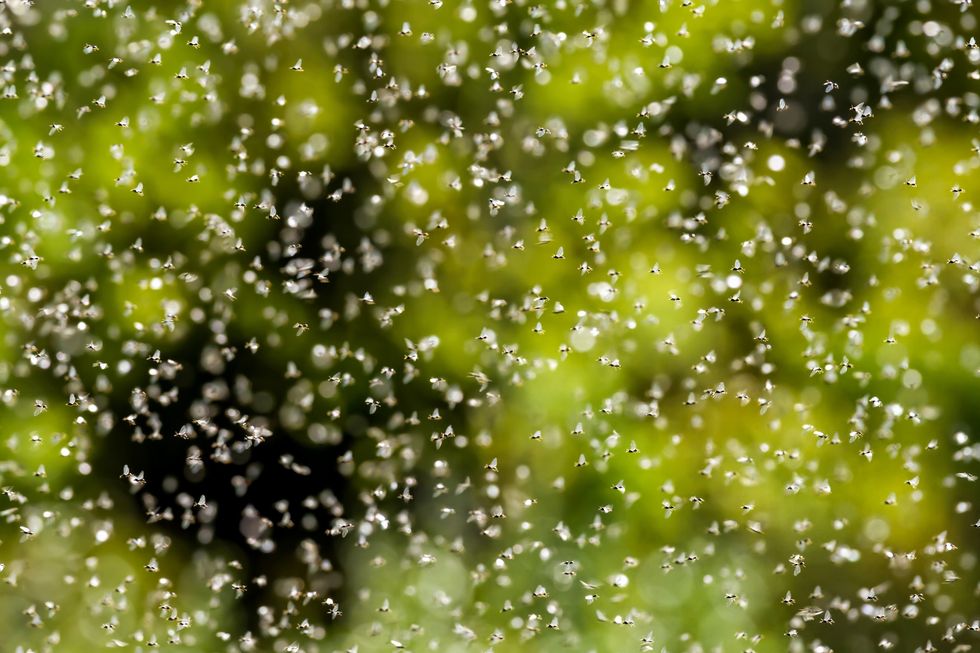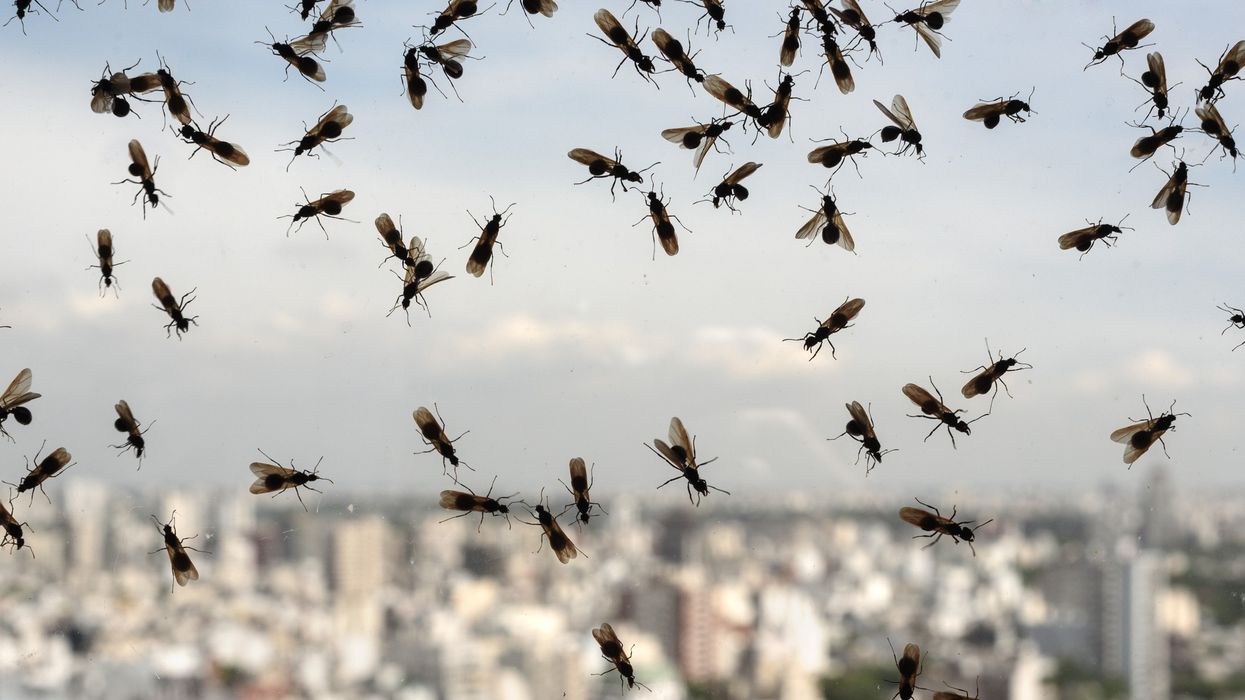Key points:
- Flying Ant Day expected earlier this year, with peak around 22–25 July
- Warm, humid weather creating ideal swarming conditions
- Experts say urban areas may see ants sooner due to higher temperatures
- Swarms are a nuisance but vital for the UK’s ecosystem
- Prevention tips include sealing cracks, storing food, and cleaning up spills
Experts warn Flying Ant Day 2025 could bring record swarms
Britain may experience one of its worst ever Flying Ant Days this summer, with swarms of the winged insects expected to appear earlier than usual. Experts predict that the nationwide phenomenon, which typically occurs in July and August, could peak between 22 and 25 July due to ideal weather conditions.
Flying Ant Day refers to the period when millions of male and female ants, known as alates, leave their colonies to mate mid-air before starting new colonies. While the name implies a single day, the mating flights actually occur over several weeks, depending on location and weather.
Why 2025 could be particularly bad
This year’s alternating warm and wet weather has created perfect conditions for swarming, according to pest control experts. High humidity helps keep the ants’ wings moist and aids their flight, making large-scale mating events more likely.
Paul Blackhurst, Technical Academy Head at Rentokil Pest Control, said:
“Experts warn that this year could see larger-than-usual swarms of flying ants. The alternating wet and warm weather we have been experiencing recently is creating the perfect conditions for their mating flights.”
Urban areas are expected to see earlier swarming due to higher ground temperatures, which accelerate the ants’ readiness to leave their nests.
Best Ants UK has predicted an earlier appearance of the phenomenon, with key dates falling between 22 and 25 July.
What is Flying Ant Day and why does it happen?
Flying Ant Day is a natural event during which queens leave their nests to mate and establish new colonies. After mating mid-air, male ants die while fertilised queens drop to the ground, shed their wings, and begin tunnelling into the soil to lay eggs.
This tunnelling activity helps to aerate the soil and improve its quality. The newly established colonies support thousands of ants and continue the reproductive cycle.
Blackhurst added: “Though it may seem like a summertime nuisance, this swarming strategy is believed to help more ants survive by overwhelming their predators including swifts and gulls.”
Flying ants: an ecological asset

Despite being viewed as a summertime pest, flying ants play a crucial role in the UK’s ecosystem. Their mating rituals not only help grow ant populations but also benefit the environment in various ways.
Their underground nesting improves soil health, while the swarms provide a vital food source for birds. In particular, species such as the silver-studded blue butterfly rely on ants for survival. The black garden ant and cornfield ant tend to the butterfly’s caterpillars in exchange for sweet secretions.
As Blackhurst noted: “Flying ants play a vital role in the ecosystem by aerating soil, recycling nutrients, and serving as a key food source for birds.”
How to prevent flying ants in your home
While their role in nature is important, flying ants can be a nuisance if they enter homes in large numbers. Pest control company Rentokil has provided several tips to help prevent infestations:
- Seal cracks and gaps around doors, windows, and pipework
- Sweep up food debris from under appliances and units
- Clean up food and liquid spills immediately
- Store food in airtight containers
- Remove uneaten pet food promptly
- Ensure bins are sealed with tight-fitting lids
- Keep windows and doors shut where possible
- Install fly screens to block flying ants while allowing airflow
- Use strong detergent to erase ant pheromone trails
These measures can reduce the likelihood of ants establishing trails or finding food sources inside.
What to expect in the coming weeks
With the UK’s weather continuing to fluctuate between warm spells and rain, conditions remain ideal for a significant swarming event. People across Britain, particularly in cities and warmer regions, are advised to prepare for the arrival of Flying Ant Day.
Although inconvenient for picnics and outdoor gatherings, the annual event remains an important part of the natural cycle, one that supports biodiversity and maintains soil health across the country.














